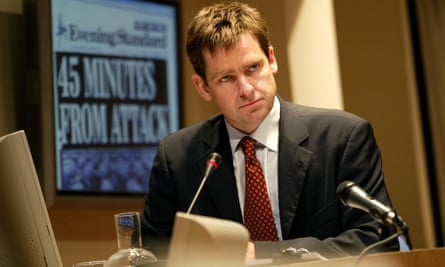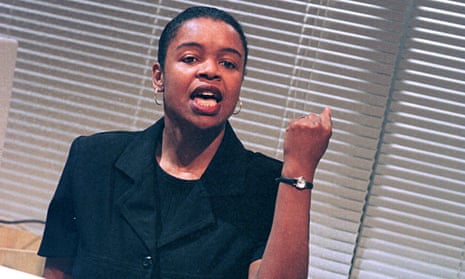Documentary theatre, verbatim theatre in particular, is an extension of journalism. In an age of cover-ups, spin and short attention spans, the theatre is a tremendous platform on which to explain and illuminate the context and causes of abuse and wrongdoing.
David Hare has said that verbatim theatre “does what journalism fails to do”. Robin Soans, whose plays include Talking to Terrorists, said that above all “the audience for a verbatim play will enter the theatre with the understanding that they’re not going to be lied to”.
The first of a series of what we have called tribunal plays, now brought together in a single volume, began life on the tennis court. Every week, I regaled my partner, Nicolas Kent, then artistic director of Kilburn’s Tricycle theatre, about the evidence emerging from the Scott inquiry into the arms-for-Iraq scandal. Half the Picture, first performed in 1994, owed its title to the observation by Lord Butler, former cabinet secretary, that “half the picture can be true”. (Pursuing the theme, Ian McDonald, government spokesman during the Falklands conflict and later responsible for arms exports, told the inquiry: “Truth is a very difficult concept.”)
But how could such wordplay and Whitehall semantics contribute to a successful piece of the theatre, I wondered. I need not have worried. Audiences were delighted to witness the unintended humour, humiliation and sheer dishonesty of senior government officials, unaccustomed to being asked questions in public, and of ministers, responding to rigorous cross-examination which they are rarely subjected to in the Commons. The verbatim plays struck chords.
In 1999, Nick and I produced The Colour of Justice, taken from the Macpherson inquiry into the killing of Stephen Lawrence. We could expose the racism – institutional, the judge called it, and of the Metropolitan police – in a single piece for the theatre, something more powerful, and with a much greater impact, than any number of shorter, inevitably intermittent, articles in newspapers, or short clips on the radio or television news. Hare wrote at the time that The Colour of Justice “peeled off the successive layers of official evasion, lies and incompetence, it showed an Ibsenite formal rigour ... it seemed to expose other forms by the sheer seriousness and intensity with which it was able to bring the theatre’s special scrutiny to bear”.
In Nuremberg, which I edited from transcripts on the 50th anniversary of the war crimes trials, Hermann Göring makes a final speech in his defence. In the middle of it, one night, an elderly woman in the audience who had friends who perished in Auschwitz, shouted out, “Don’t listen to him, it’s all lies, lies, he’s just telling lies.” She then realised she was in the theatre and sat down and cried. That, Kent remarked later, encapsulated the power of this sort of theatre.

I was helped by the material being the evidence of public inquiries, or a trial, which presented the arguments, and provided the tension, via the questioning and cross-examination of witnesses. This was the case in Half the Picture, The Colour of Justice, Justifying War (from the Hutton inquiry into the death of David Kelly, the government’s Iraqi weapons expert), Bloody Sunday, and Tactical Questioning, on the death of Baha Mousa, the Iraqi hotel receptionist who died while in the custody of British troops.
Nick taught me, not only about the power of the theatre in exposing facts to a wider public, but also how apparently inconsequential incidents or anecdotes which a journalist or newsdesk might ignore, could be very telling. For example, Doreen Lawrence, Stephen’s mother, described how when she handed a senior police officer a note containing a list of suspects, he simply “rolled the piece of paper up in a ball in his hand”. She added: “I was shocked by what I saw.” Another senior officer told the Macpherson inquiry, with no hint of shame, or irony, after he was asked about any evidence he collected at the time of the murder: “I still have the clipboard. I don’t have any notes.”
Other playwrights, including Owen McCafferty in Titanic, have written verbatim plays. Some of the tribunal plays – The Riots by Gillian Slovo, and Guantánamo, which she edited with Victoria Brittain, were taken from interviews. Other writers, including Philip Ralph, author of Deep Cut (the army’s barracks where four young recruits died, apparently by committing suicide), adopted a similar approach. Yet others, including Hare and Gregory Burke, author of Black Watch, combined material from interviews or speeches with material of their own.
The playwright David Edgar, in a roundtable discussion included in this collection, suggests that fact-based drama has done its job. “And it may be that part of that job has been to put theatre back at the centre of political life.”

Comments (…)
Sign in or create your Guardian account to join the discussion